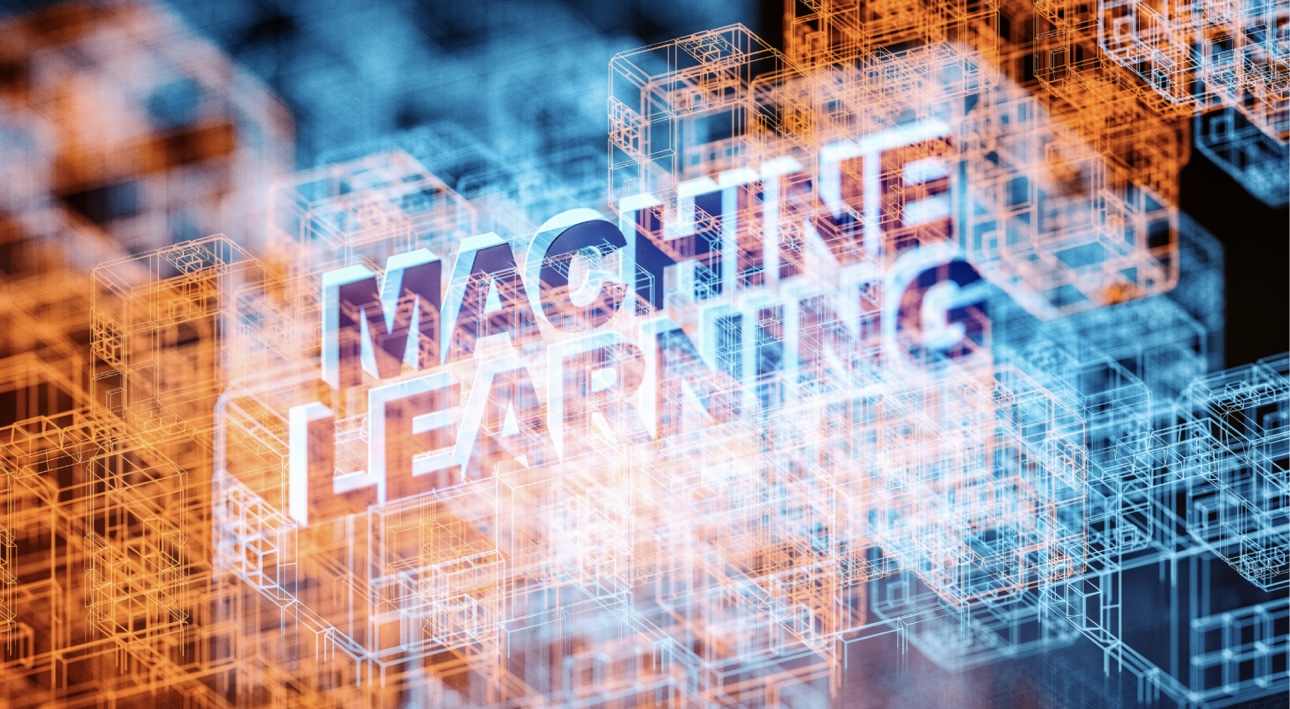Optimizing Industrial Performance: The Role of Machine Learning Algorithms in Process Improvement

Optimizing Industrial Performance: The Role of Machine Learning Algorithms in Process Improvement
Companies now more frequently depend on ML algorithms to help maximize their progress. With ML, companies can explore huge amounts of data, spot patterns and take actions based on data that benefit both efficiency and innovation. As a result of AI, JPMorgan Chase is operating more productively and is able to interact better with its clients. The article takes a look at the leading ML algorithms used to optimize different business tasks. Thanks to ML, industries are now able to predict and address issues early and personalize the experiences their customers receive. With this exploration, we hope to show businesses how they can use ML for ongoing growth and advantage over others.
UNDERSTANDING HOW OPTIMIZATION WORKS

Optimization is a process that helps systems, workflows or outcomes become better by discovering the most effective ways to reach certain goals. You could use this idea for industrial operations, software programming, logistics systems or even working on your own. By studying history, these algorithms can guess results and either suggest or carry out actions that can improve how things turn out in the future. Below, you will find basic information on important Machine Learning Algorithms for Optimization.
1. Algorithms that Make Use of Gradients
Stochastic Gradient Descent is an optimization algorithm. Stochastic Gradient Descent is a crucial and commonly used algorithm in the world of machine learning. Unlike conventional gradient descent, SGD uses just a small part of the dataset or a single sample, in every iteration. Because computations are much faster, this type of model is best for large-scale data sets. Because of SGD, there is randomness in the training process, allowing the model to escape becoming trapped at local minima and to train better. In training deep neural networks and for progress in computer vision and natural language processing, convolutional neural networks are very important.b. Adaptive Learning: The use of Adam and RMSprop Limitations in SGD have led many researchers to develop adaptive optimization algorithms. These include Adam and RMSprop among others. Such algorithms change the learning rate for every parameter specifically during training, resulting in a better and faster convergence. RMSprop keeps a moving sum of gradient squares to normalize the gradient and Adam also uses past gradients to calculate a decaying average from them. This collection of resources means Adam is both effective and dependable for many deep learning jobs. For this reason, millions of machine learning practitioners now see it as the primary choice for optimization.
2. Evolutionary Algorithms

Genetic Algorithm is another type of algorithm. Genetic Algorithms get their inspiration from natural selection and genetics. Often, they are applied to solve optimization and search problems that are challenging with standard gradient approaches. GAs model a group of solutions that change and improve through selection, cross over and mutation. They perform very well in cases where the solution is among many options and doesn’t follow an obvious pattern. You would usually use it for deciding which features to include, shaping a neural network and adjusting hyperparameters to train your models.
Biochemical Optimization (PSO)
This optimization method is called Particle Swarm Optimization and uses information from natural actions like birds flocking or fish schooling. PSO updates each particle’s position using its own experience as well as the experience of the closest ones. PSO is commonly used in continuous optimization cases and has helped in training neural networks, solving function optimization and making control system designs. It gives agents a good way to balance looking for new places with perfecting what is already good.
3. Algorithms Based on Swarm Intelligence
Ant Colony Optimization (ACO) This uses knowledge from ants and focuses on how they mark routes by laying down pheromones to lead them directly to food. This method, used in ACO, virtually mimics the biological search, allowing it to correctly find paths efficiently.Discrete optimization problems such as the Traveling Salesman Problem, vehicle routing and network design, are best solved using this method. Ant agents use the pheromone level on different paths to find better solutions which in turn improves the accuracy of the algorithm.
Simulated Annealing is called SA. Simulated Annealing is inspired by how metals are improved through a process called annealing. Sometimes, the algorithm takes a less than best answer to move past areas that seem to offer no further improvement. With the “temperature” value becoming smaller over time, the algorithm grows more cautious towards less than perfect moves and therefore ends up at the best solution possible. Because of its properties, SA is frequently applied to circuit design, job scheduling and optimizing graph structures. It is strong because it is simple and because it stays away from coming close to an inferior local maximum.
4. Reinforcement Learning Algorithms

In RL, machines are developed to perform multiple decisions by interacting with their surroundings. The approach guides models to act optimally by giving rewards or penalties whenever their actions vary from the guidelines. Popular algorithms for Reinforcement Learning is Q-Learning and DQN which learn what action will lead to the best result in certain states. RL is key to several areas where decisions must be made continuously, including robotics, game playing (as shown with AlphaGo) and controlling driverless vehicles.
Certified System Integrator Program
Set Yourself at the Forefront of the Global Vision Market
.jpg) Vision system integrators certified by A3 are acknowledged globally throughout the industry as an elite group of accomplished, highly skilled and trusted professionals. You’ll be able to leverage your certification to enhance your competitiveness and expand your opportunities.
Vision system integrators certified by A3 are acknowledged globally throughout the industry as an elite group of accomplished, highly skilled and trusted professionals. You’ll be able to leverage your certification to enhance your competitiveness and expand your opportunities.
5. Hybrid and Memetic Algorithms
The goal of both hybrid and memetic methods is to gather the advantages of several optimization approaches. That’s why Memetic Algorithms add global search strategies and local search heuristics to improve the quality of solutions and help them meet goals faster. They are important in complex and high-dimensional optimizations when large-scale search and precision in best areas are required. Applications are found in scheduling, routing and fine-tuning advanced machine learning algorithms.
APPLICATION OF OPTIMIZATION IN MACHINE LEARNING

Machine learning models in many industries benefit greatly from the use of optimization algorithms. Being able to update models and address complex real-world decisions means they are necessary for many applications. Healthcare. Data involved in healthcare optimization efforts is used to find accurate ways to diagnose conditions, adjust treatment for each patient and improve overall medical results.
Finance: In this industry, algorithms support the perfect balance of investments, determining risks and finding possible fraud through the study of large amounts of transaction and market information.
Manufacturing: Some sectors of manufacturing use optimization to reduce times that systems are down for maintenance, when goods are delivered and spendings on operations.
Transportation: As a result of using optimization in transportation, it is easier to plan routes, manage fleets and predict when and where traffic might occur.
Retail: Retail businesses use optimization to handle stock management, predict future sales and group customers so they can provide unique offers and resources. The broad and extensive applications seen above demonstrate that optimization algorithms are versatile and play a key role in handling various difficult challenges. Therefore, these optimization algorithms find applications in different industries.
CURRENT CHALLENGES AND FUTURE RESEARCH PATHWAYS

Optimization algorithms have strongly boosted the success of machine learning; this success necessitates their wide range of applications across various fields. This has been discussed already. However, these algorithms continue to deal with several critical obstacles that can have far reaching effects on their abilities and, in the long run, their functionalities. Best database solutions are necessary to make machine learning systems more robust, useful and easy to apply to different tasks.
Versatility: Many optimization methods struggle when they are applied to lots of data and many dimensions. With more data and more complicated problems, it’s becoming crucial to make sure algorithms can handle the work without wasting resources.
Adapting Global Best Practices: A typical issue, especially in non-convex problems is that algorithms usually end up at local minima, rather than at the global optima. Because of this, some deep neural networks cannot achieve optimal results.
Understandability: It is getting increasingly challenging to understand and interpret what complex models, for example, deep learning ones, are thinking. Because the internal workingsof these complex models are opaque, the healthcare field, where trust and transparency are key, finds their application a challenge.
Robustness: Commonly, machine learning systems must handle data that might be noisy, have missing information or corrupted. Optimization approaches must be strong enough to deal with such uncertainties and still remain dependable and effective.
These issues will continue to guide future work in research and development.
Future Directions

Future studies in optimization are focused on building better, clearer and more dependable algorithms. New technologies such as quantum computing and neuromorphic engineering, may help move things forward by addressing and solving problems that today's computers are not yet capable of handling.
CONCLUSION
Enhancing model training and outcomes in machine learning mainly depends on key optimization algorithms. They give models the ability to discover patterns from data, tailor their settings and decide based on real information. Since machine learning is becoming more important in healthcare, finance, transportation and retail, the demand for efficient and reliable optimization will only expand. Resolving difficulties such as scalability, explainability and dependability will be necessary for ML to show its potential. The optimization field will develop and change rapidly due to continuous studies and advancements in technologies.







Leave a Reply